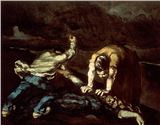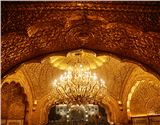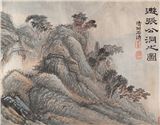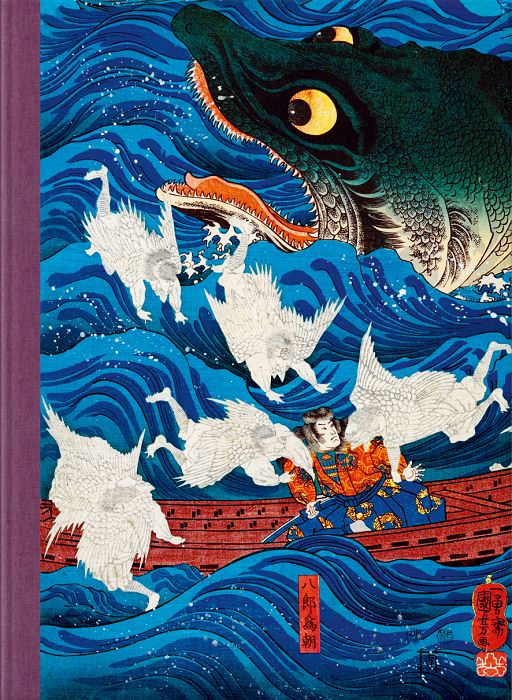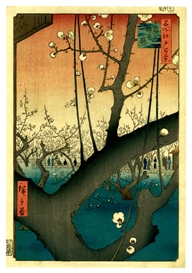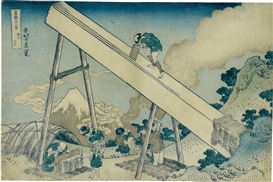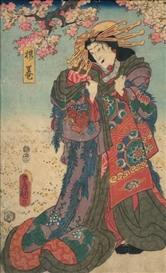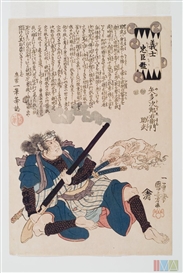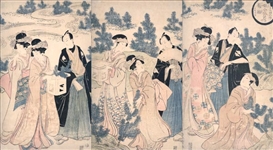Book Review: A Magnificent Journey Through Japanese Woodblock Prints
From warrior tales to gorgeous Geishas to tranquil landscapes, Taschen’s outstanding publication is a masterpiece of Japanese artistry
Michael Pearce / MutualArt
Jan 19, 2022

Andreas Marks, Japanese Woodblock Prints. Taschen
As the finishing touch to luxurious reception rooms, oversized Taschens provide the lavish stamp of cultured wealth, for they are impossibly superlative, gorgeous delights with the weight and religious authority once reserved for holy books — but Japanese Woodblock Prints has surpassed even the usual elevated standards of this extraordinary publisher. This glorious volume is sacred to the sensual art of the floating world of ukiyo-e.
The word “ukiyo” was originally used by Japanese Buddhists to describe our transitory, ephemeral life, which they believed should be valuably spent on spiritual matters. However, this was redefined by the people of the new mercantile and warrior society of Edo to describe “the enjoyment of life’s fleeting pleasures.” Novelist Asai Ryoi was first to use the term as the title to his book Ukiyo Monogatari (Tales of the Floating World) in the 1660s, and it was quickly picked up by illustrators. Opening the book with a vivid contrast between delicate feminine serenity and the vigor of a wild storm captures the spectacular range of the artists who created this floating world of dream-like visions in a flood of pictures from sensual life. There are pictures of the bloodstained and demonic violence of superhero warrior tales, of fantastic beasts, of actors under the extravagant grimacing masks of Kabuki theater, of gorgeous white-painted geishas, beautiful tranquil landscapes, and a sprinkle of enthusiastic and imaginative pornography, including Katsushika Hokusai’s memorable and sensational image of A Female Diver Being Pleasured by a Large and a Small Octopi.
The transcendent pleasures of the book begin on the front board of this masterpiece of publishing, where we are immediately confronted by the frames of a spectacular triptych. A huge sharp-toothed shark scaled in spiral tiles crashes through the ocean’s surging surface beside a long skiff, where the legendary warrior, rugged samurai Tametomo, is swarmed by nine spectrally white bird-men with beaked faces, supernatural allies sent by the retired Emperor Sutoku to save him and his party from the storm. Tametomo’s wife, the Princess Shiranui, struggles in the swelling seas, arm outstretched to safety — she has unsuccessfully sacrificed herself in the swirling sea in a desperate attempt to still the cyclone. Tametomo's retainer Kiheiji clings to the slippery back of the shark shielding Tametomo's baby boy in his arms. This astonishing spectacle – reproduced by Taschen in its full size – was originally rendered by master Utagawa Kuniyoshi in 1851, who crafted it with fantastic precision and feeling for the energy of the storm. The curling undulations of the swollen waves, which he scooped from his hard wood blocks, are as fresh and vital now as they were nearly two centuries ago.
The storm and drama of the cover is immediately calmed by the serenity of an exquisite triptych of three gorgeous young women, luxuriously dressed in the high Edo fashion of two centuries ago, with their glossy black hair held up in chic style by long combs, their perfect porcelain faces flawless white, flagged by the grey shadows of passers-by cast on fragile paper screens shielding them from the outer world. Their delicate pink lips accent their scented sensuality. We are voyeurs gazing upon a quiet and intimate feminine moment — the woman on the right offers a pin to her friend on the left who struggles with her falling hair. At center, a third checks her perfection with a round peach-colored mirror. This is Kikugawa Eizan’s Three Fashionable Beauties Cooling off in the Evening.
Inside, author Andreas Marks has made a beautiful selection of imagery from the history of the prints by their greatest artists, divided into seven periods, beginning with the monochromatic single block prints of the early masters, quickly moving on into the era of the first full color prints and into the golden age of the late 18th century, the ensuing censorship of the early 1800s and the peak of print production by the 1850s. He continues with the last phase of the traditional printmakers and concludes with Shin Hanga, the mixed period of nostalgic replication and exploitation of the Western marketplace which extends into the present. Marks has provided historical context for them in a thoughtful essay, Japanese Woodblock Prints in 200 Masterpieces from Ukiyo-e to Shin Hanga, translated into English, French, and German, but the images are the star of the show.
The tentative re-opening of Japan to Western trade in 1848 after two centuries of isolation coincided with the period of peak production of Japanese prints, and a flood of exportation of prints and objets d’art began — European shops began specializing in Japonaiserie and sparked an enthusiasm which contributed profoundly to the flow of Western aesthetics. By the 1860s, artists like James McNeill Whistler, Claude Monet, Vincent Van Gogh, and Alfred Stevens were enthusiastic collectors, deeply influenced by the composition and color of the prints, and the layered extravagance of pattern and decoration provoked imitations in architecture and interior design.
In Japan, artists responded to the demand and the competition it caused by producing masterpieces. Katsushika Hokusai created his famed series, Thirty-six Views of Mount Fuji, represented in the book by four examples, including the brilliant Kajikazawa in Kai Province, a perfectly balanced image of a bending fisherman hauling in his taut lines from the foaming waves, the echoing shapes of land and waves staged before the backdrop of the elegant and iconic mountain. This beauty is followed by the excellent and rightly renowned Under the Wave off Kanagawa (known as The Great Wave), the famous drama of a rogue wave threatening to crash down onto three oshiokuri-bune boats loaded with hunched rowers and passengers bracing for the impact. The cresting wave towers over the distant mountain, which repeats its shape and color.
Now the book becomes a series of sensual masterpieces. Hokusai’s Waterfall at Mount Kurokami is a wonder of composition. Utagawa Hiroshige’s simple and peaceful Kanbara: Night Snow and his dynamic Shono: Driving Rain show off his calm skill, and he is well represented with several more of his unique works. Stormy compositions by Yashima Gakutei and Utagawa Toyokuni II elevate the art of woodblock engraving to its most sophisticated level.
The traffic of artistic technique went in both directions, and continues in the present. Utagawa Kunisada’s extraordinary View of Dawn at the Coast off Futami balanced Western perspective drawing and Japanese spirituality and composition. A spectacular gate-folded image of A Glimpse of the Ogiya by Eisho ties early 19th-century Western interior design to Japan — the enfolding wings of an enormous peacock providing a dramatic backdrop to the comfort of three famed courtesans seated in leisurely luxury. It is impossible to look at bloody 19th-century pictures like Hokuei’s The Actor Arashi Rikan II as Danshichi Kurobei or Hirosada’s The Actor Ogawa Hashizo as Shirai Gonpachi or Utagawa Kunisada’s Mount Kokushi without thinking of the violent and histrionic imagery of contemporary manga and their influence upon Western animation and film-making. The continuing cultural interplay, this back and forth of artistic exchange always feeds imaginative work, for artists always seek novelty. It isn’t appropriation, it’s homage.
For more on auctions, exhibitions, and current trends, visit our Magazine Page


